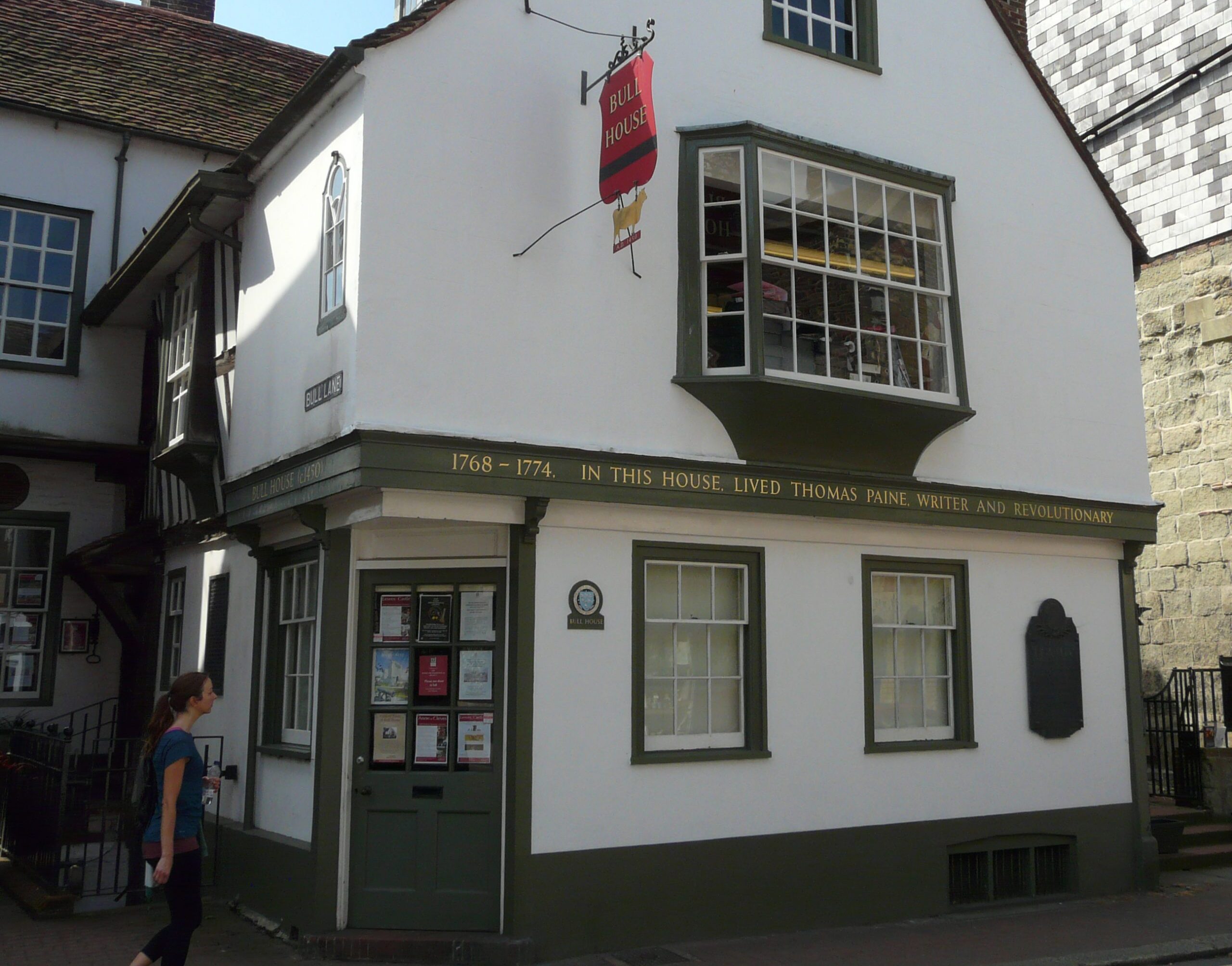
A Short History of Bull House
Bull House is the head office of The Sussex Archaeological Society. But the Society isn’t Bull House’s most famous resident. That accolade belongs to Thomas Paine, author of The Rights of Man, who lived at Bull House from 1768 to 1774.
Timeline
- 15th century – Bull House built
- Late 17th century – Bull House divided in two
- 1768 – Thomas Paine moves into Bull House
- Early 1920s – Bull House purchased and restored by John Every
- 1936 – Bull House gifted to The Sussex Archaeological Society
- 1990s – Bull House becomes the Society’s head office
About Bull House
Located at the western end of the high street in Lewes, adjoining the town’s west gate, Bull House is a substantial timber-framed property dating from the 15th century.
The building has had many uses, owners and tenants during its 600-year history. Each has made their mark on the property, which has alterations dating from the 17th to 19th century.
In the late 17th century, the building was purchased by Rev Thomas Barnard, a Unitarian minister. At this point, the building was permanently divided into two. The front half remained Bull House and the rear portion became Westgate Chapel.
‘Tom Paine House’
Bull House has been known by many names over the years.
Distinctive carved satyrs above the front door led to the property being nicknamed ‘The Monkey House’. It’s also sometimes known as ‘The Bull’ thanks to its use as a tavern by that name.
However, most significant is ‘Tom Paine House’, in reference to the property’s most famous resident.
Thomas Paine (1737 – 1809) is one of the country’s most significant authors and campaigners.
A political writer, pamphleteer, theorist and thinker, Paine was a key influence in the American War of Independence, the writing of the American constitution and is considered a father of British Radicalism.
Thomas Paine and Bull House
Thomas Paine lived at Bull House from 1768 to 1774, after coming to Lewes to take up a position as an exciseman. He found lodging with Samuel Ollive – an established and respected grocer and tobacconist – at Bull House.
In 1771, Paine married Elizabeth Ollive, the daughter of his recently deceased landlord. Thomas and Elizabeth took on Samuel’s tobacco and grocery business.
As Thomas settled into life in Lewes, he continued working not only as exciseman and shopkeeper but became increasingly involved in civic life as a juryman and vestryman.
It was whilst living at Bull House that Paine wrote his first political pamphlet – The Case of the Officers of Excise – in 1772, asking Parliament for better pay and working conditions for excisemen.
Paine was also an ardent debater at the Headstrong Club in Lewes. Arguably, debates here helped form some of the ideas behind his later book – The Rights of Man – in 1791.
Bull House gifted in 1936
In the early 1920s, the Lewes iron founder John Every acquired Bull House. By this time the property required considerable repair and he embarked on a thorough restoration project in 1922. Every gifted Bull House to the Society in May 1936.
Bull House today
Today, Bull House is currently the head office of The Sussex Archaeological Association.
The Society is developing plans to increase public awareness and access to this important heritage.
